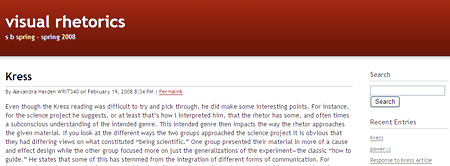A program launched and supported by Information Technology Services helped four faculty members undertake projects with technology twists this past academic year.
The goal of the Technology Innovation Fund, which allocated $20,000 in grants, is to help professors explore emerging technologies and their potential for enhancing teaching and research, according to David Baird, director of academic technologies for ITS.
The faculty members who participated in the first year of the program were Ian Helfant, associate professor of Russian; Alexander Nakhimovsky, associate professor of computer science; Suzanne Spring, assistant professor of writing and rhetoric; and Jun Yoshino associate professor of psychology.
The four recently discussed their projects at the Case Library and Geyer Center for Information Technology.
Spring spoke about how the grant she received helped her experiment with blogging as a teaching tool, and how it allowed her to attend the Digital Media and Composition conference held at Ohio State University.
She utilized blogs, a type of website that can have multiple authors, in two of her courses. The blogs helped spur conversation among students and let them link to outside sources to supplement the discussions.
“I think they provided another kind of opportunity for the students to participate,” she said about the blogs, which were created and supported by Dan Wheeler, ITS senior instructional technology analyst.
One of Helfant’s goals was to use video, specifically the popular video-sharing site YouTube, as another way to immerse students in the culture of Russia.
He worked with two students who took the Russian-language trailer of the film Mongol, and repurposed it by adding Russian and English subtitles. It was a painstaking process to translate the video clip line by line, he said, but a valuable exercise. The video was then remixed and uploaded back to YouTube.
The video project was supported by Ray Nardelli, director of the digital media lab.
Yoshino and his students stepped into the virtual world known as Second Life as part of their work for Core 116 — Critical Analysis of Health Issues: AIDS.
Early steps were taken to create a virtual world in which information about AIDS and ways to discuss the disease with friends and family could be presented.
Yoshino talked about the growing interest of the students as the virtual world took shape, and he was excited about the possibilities such a forum presents as an informational portal and teaching tool.
Nakhimovsky said his students in an introduction to computers course were able to explore “mashups,” which utilize web applications to combine different sets of data in a unified way.
Students investigated a Google map application and ways to adapt it, including ideas for creating a specialized map to show where off-campus housing units are available near Colgate.
